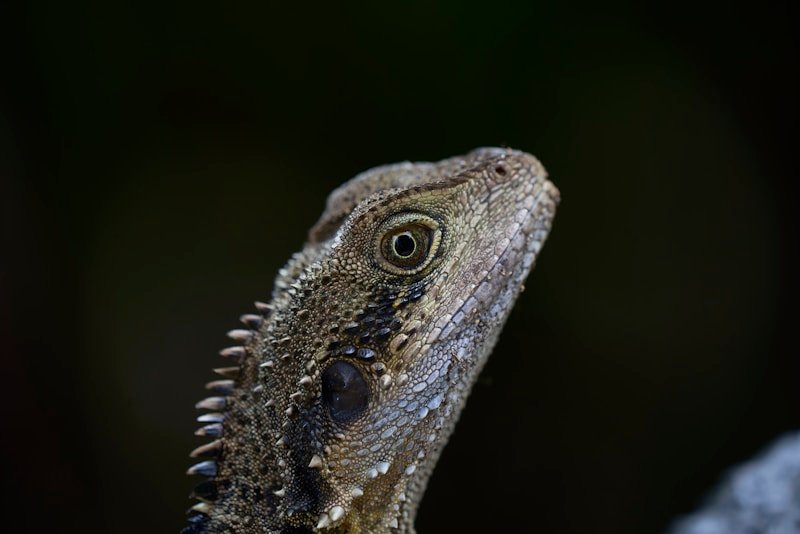Reptiles are some of the most fascinating creatures on Earth. From slithering snakes to majestic turtles, they capture our imagination and often spark curiosity. However, along with their intrigue, a number of myths and misconceptions about these cold-blooded animals have persisted for centuries. In this article, we’ll tackle some of the most common reptile myths, separating fact from fiction to better understand these incredible creatures.
Myth 1: Reptiles Are Cold-Blooded, So They Don’t Need Food or Water Often
One of the most common myths surrounding reptiles is that, because they are cold-blooded, they don’t need food or water frequently. While it’s true that reptiles are ectothermic (meaning they rely on external sources to regulate their body temperature), this does not mean they require significantly less food or water than mammals.
In fact, reptiles still need regular access to food and water to stay healthy. Their metabolism might be slower compared to warm-blooded animals, but they still require proper nutrition to thrive. Depending on the species, some reptiles eat every day, while others may feed once or twice a week, but hydration is always crucial.
The myth likely stems from the observation that reptiles, like snakes, lizards, and turtles, can go for longer periods without feeding when they’re in cooler environments. However, even these animals still need access to water to prevent dehydration and to maintain proper bodily functions.
Myth 2: All Snakes Are Venomsous and Dangerous
Another widespread myth is that all snakes are venomous and dangerous. In reality, only about 600 species of the 3,000-plus snake species worldwide are venomous, and many of these venomous snakes pose little or no threat to humans.
The vast majority of snakes are non-venomous, and they actually serve vital roles in ecosystems by controlling rodent populations. Most snakes will avoid humans whenever possible, and attacks are extremely rare. Non-venomous snakes, such as garter snakes and corn snakes, are often mistaken for dangerous species due to their appearance or defensive postures.
Venomous snakes, like cobras or vipers, are indeed dangerous, but they are not as common as popular culture might suggest. It’s important to remember that snakes, in general, are shy creatures and tend to avoid conflict. Educating yourself on the different species in your area can help prevent unnecessary fear.
Myth 3: Turtles Live for Hundreds of Years
While it’s true that some turtle species have impressively long lifespans, the myth that turtles can live for hundreds of years is exaggerated. The most famous example of a long-living turtle is the Galápagos tortoise, which can live for over 100 years. However, no known turtle has ever lived to be several centuries old.
In reality, most turtles have lifespans that vary widely depending on the species. For instance, box turtles can live for 50-70 years, while red-eared sliders, a common pet species, typically live between 20 to 30 years when cared for properly.
Some species of turtles, particularly in the wild, may face threats from predators, habitat loss, or climate change, which can impact their overall lifespan. While some turtles do live for many decades, the idea that they are immortal or can reach 500 years is a myth with no basis in fact.
Myth 4: Reptiles Can’t Be Trained or Form Bonds with Humans
Another misconception is that reptiles are cold, emotionless creatures incapable of forming bonds with humans or being trained. This belief couldn’t be further from the truth. While reptiles don’t form the same kind of attachment as dogs or cats, they are still capable of recognizing their owners and responding to stimuli.
For example, some species of lizards, such as bearded dragons, are known to recognize their human caretakers and may even enjoy being handled. Turtles can also develop preferences for their human caregivers, recognizing them and responding positively when they approach. Many reptiles, including snakes and geckos, can learn to associate humans with food, becoming more comfortable and less fearful over time.
Training reptiles might not look the same as training a mammal, but with patience and consistency, many species can be conditioned to perform specific behaviors, like eating on cue or even responding to their names. Reptiles are more intelligent than many give them credit for, and they can adapt to their environments, making them just as capable of building relationships with humans as other pets.
Conclusion: Reptiles Are Fascinating, But Myths Persist
While reptiles may often be misunderstood or misrepresented, they are no less fascinating than any other animal group. Many of the myths surrounding reptiles stem from misconceptions, fear, and outdated information. By understanding the real facts behind these creatures, we can appreciate the incredible diversity and adaptability they offer to the natural world.
Whether you’re a reptile enthusiast or simply someone curious about these creatures, it’s important to distinguish myth from reality. The more we learn about reptiles, the more we can protect them and ensure their survival in an ever-changing world. So, next time you encounter a reptile, remember: the truth is often much more interesting than the myth.

